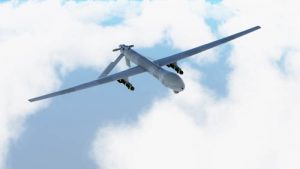Long before stories of Unmanned Aircraft Systems (UAS), or “drones,” appeared frequently in the news, NASA and the Federal Aviation Administration (FAA) recognized the need to safely manage UAS flying at low altitudes in airspace not currently managed by the FAA. For more than 25 years, NASA has conducted air traffic management system research in partnership with the FAA, providing a variety of computer-based tools that help maintain safety in increasingly crowded skies.
Interest in flying robot technology is skyrocketing, bringing a thrilling wave of novel uses for drones from saving lives to creating new entertainment.
Drones were initially known to many for their usefulness in the military, they have evolved quickly into tools for creating and enjoying new experiences. In some venues, they have become extensions of the human desire to innovate and help people have fun.
Nearly four million commercial drones are expected to sell this year, rising to 16 million a year by 2020, according to a new report by Juniper Research.
“Three years ago, this technology was so expensive, so unattainable, that only the professional cinematographer could afford it,” said International Drone Racing Association CEO Charles Zablan in an interview with The New York Times. Zablan said that now a full drone racing kit with flying goggles can be bought for about $1,000.
Like many new technologies, the drones are becoming less and less expensive, and also are being used in a vast array of industries. UKA is on the cutting edge of technology when it comes to manufacturing lenses specific and precise to your needs.
From a drone as simple as used to fly over your house for entertainment, to uses of top level military deployments, we are seeing more and more drones doing the work. There are drones that can fly into areas like war-torn Syria delivering food to starving villages, with drones taking cargo into Rwanda that they have their own airport.
Here are five innovative ways drones are bring used:
On the silver screen. Normally, getting aerial shots requires expensive helicopters or cranes, major Hollywood productions are turning to drones to capture footage from above. They are also helping with creating video footage for smaller productions and even amateurs.
Flying battle robots. Yes, it’s true. Something about unmanned machinery summons the inner toddler in everyone who used to mash action figures together until a limb popped off.
Capturing the Eye of a storm. Because drones are unmanned and cheap, scientists can send them into all kinds of dangerous situations. For those more interested in academics, drones can venture inside a tornado. Right now, scientists have a lot of questions about how tornadoes are formed. Engineering students at Oklahoma State University could be changing that in the future. They are working to develop drones capable of flying into dangerous storms and collecting data.
Drones are being used on the Ottawa River to chase geese away. The geese are proving resistant to any effort to drive them from the beaches, making most of the real estate uninhabitable. The Goosebuster is Ottawa’s secret weapon. It howls like a wolf, which the geese hate. It is working, the geese are fleeing in droves.
Aside from terrifying geese, drones can also be used to protect endangered animals.
Lian Pin Koh and Serge Wich, two scientists spearheading conservation efforts for the Sumatran orangutan, developed an inexpensive, lightweight drone that maps large swaths of land, a process that was once costly and time-consuming. They’ve even used their drone to take aerial photographs of orangutan treetop nests, something that’s been impossible to do in the past.
Uses in agriculture, land-surveying, photography and so many more, drone technology is improving and becoming more and more state-of-the-art.
Universe Kogaku designs and manufactures optical lenses for drone technology, security, high tech and electronic applications. We stock 1000’s of standard lens assemblies and can custom design a solution for scanners, CCTV, CCD/CMOS, medical imaging, surveillance systems, machine vision and night vision systems.